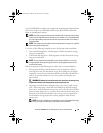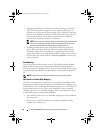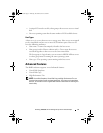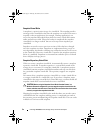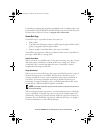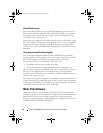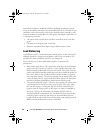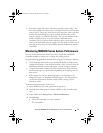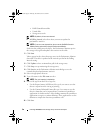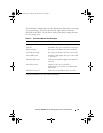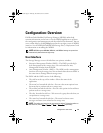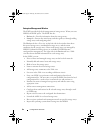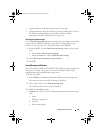
56 Planning: MD3600i Series Storage Array Terms and Concepts
Ownership can later be modified to balance workload according to actual
usage. If virtual disk ownership is not manually balanced, it is possible for one
controller to have the majority of the work, while the other controller is idle.
Limit the number of virtual disks in a disk group. If multiple virtual disks are
in a disk group, consider:
• The impact each virtual disk has on other virtual disks in the same disk
group.
• The patterns of usage for each virtual disk.
• Different virtual disks have higher usage at different times of day.
Load Balancing
A load balance policy is used to determine which path is used to process I/O.
Multiple options for setting the load balance policies let you optimize I/O
performance when mixed host interfaces are configured.
You can choose one of these load balance policies to optimize I/O
performance:
• Round-robin with subset—The round-robin with subset I/O load balance
policy routes I/O requests, in rotation, to each available data path to the
RAID controller module that owns the virtual disks. This policy treats all
paths to the RAID controller module that owns the virtual disk equally for
I/O activity. Paths to the secondary RAID controller module are ignored
until ownership changes. The basic assumption for the round-robin policy
is that the data paths are equal. With mixed host support, the data paths
might have different bandwidths or different data transfer speeds.
• Least queue depth with subset—The least queue depth with subset policy
is also known as the least I/Os or least requests policy. This policy routes
the next I/O request to a data path that has the least outstanding I/O
requests queued. For this policy, an I/O request is simply a command in
the queue. The type of command or the number of blocks that are
associated with the command are not considered.The least queue depth
with subset policy treats large block requests and small block requests
equally. The data path selected is one of the paths in the path group of the
RAID controller module that owns the virtual disk.
book.book Page 56 Thursday, December 9, 2010 3:20 PM




